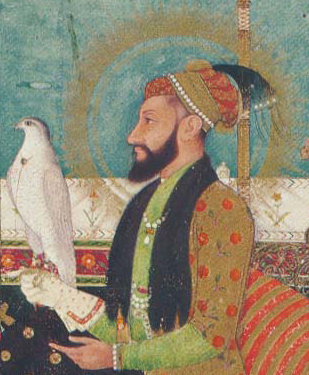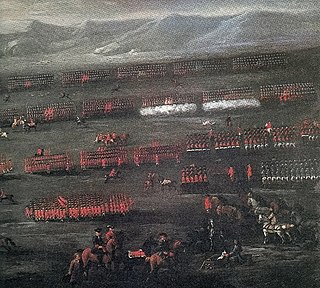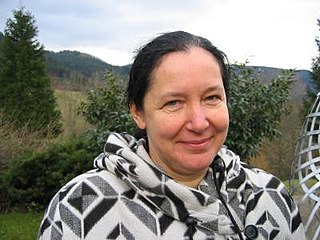Related Research Articles

The 1700s decade ran from January 1, 1700, to December 31, 1709.
The 1710s decade ran from January 1, 1710 to December 31, 1719.

1716 (MDCCXVI) was a leap year starting on Wednesday of the Gregorian calendar and a leap year starting on Sunday of the Julian calendar, the 1716th year of the Common Era (CE) and Anno Domini (AD) designations, the 716th year of the 2nd millennium, the 16th year of the 18th century, and the 7th year of the 1710s decade. As of the start of 1716, the Gregorian calendar was 11 days ahead of the Julian calendar, which remained in localized use until 1923.

1783 (MDCCLXXXIII) was a common year starting on Wednesday of the Gregorian calendar and a common year starting on Sunday of the Julian calendar, the 1783rd year of the Common Era (CE) and Anno Domini (AD) designations, the 783rd year of the 2nd millennium, the 83rd year of the 18th century, and the 4th year of the 1780s decade. As of the start of 1783, the Gregorian calendar was 11 days ahead of the Julian calendar, which remained in localized use until 1923.

1710 (MDCCX) was a common year starting on Wednesday of the Gregorian calendar and a common year starting on Sunday of the Julian calendar, the 1710th year of the Common Era (CE) and Anno Domini (AD) designations, the 710th year of the 2nd millennium, the 10th year of the 18th century, and the 1st year of the 1710s decade. As of the start of 1710, the Gregorian calendar was 11 days ahead of the Julian calendar, which remained in localized use until 1923.

1715 (MDCCXV) was a common year starting on Tuesday of the Gregorian calendar and a common year starting on Saturday of the Julian calendar, the 1715th year of the Common Era (CE) and Anno Domini (AD) designations, the 715th year of the 2nd millennium, the 15th year of the 18th century, and the 6th year of the 1710s decade. As of the start of 1715, the Gregorian calendar was 11 days ahead of the Julian calendar, which remained in localized use until 1923.

1717 (MDCCXVII) was a common year starting on Friday of the Gregorian calendar and a common year starting on Tuesday of the Julian calendar, the 1717th year of the Common Era (CE) and Anno Domini (AD) designations, the 717th year of the 2nd millennium, the 17th year of the 18th century, and the 8th year of the 1710s decade. As of the start of 1717, the Gregorian calendar was 11 days ahead of the Julian calendar, which remained in localized use until 1923.

1719 (MDCCXIX) was a common year starting on Sunday of the Gregorian calendar and a common year starting on Thursday of the Julian calendar, the 1719th year of the Common Era (CE) and Anno Domini (AD) designations, the 719th year of the 2nd millennium, the 19th year of the 18th century, and the 10th and last year of the 1710s decade. As of the start of 1719, the Gregorian calendar was 11 days ahead of the Julian calendar, which remained in localized use until 1923.

1708 (MDCCVIII) was a leap year starting on Sunday of the Gregorian calendar and a leap year starting on Thursday of the Julian calendar, the 1708th year of the Common Era (CE) and Anno Domini (AD) designations, the 708th year of the 2nd millennium, the 8th year of the 18th century, and the 9th year of the 1700s decade. As of the start of 1708, the Gregorian calendar was 11 days ahead of the Julian calendar, which remained in localized use until 1923.

1709 (MDCCIX) was a common year starting on Tuesday of the Gregorian calendar and a common year starting on Saturday of the Julian calendar, the 1709th year of the Common Era (CE) and Anno Domini (AD) designations, the 709th year of the 2nd millennium, the 9th year of the 18th century, and the 10th and last year of the 1700s decade. As of the start of 1709, the Gregorian calendar was 11 days ahead of the Julian calendar, which remained in localized use until 1923.

1701 (MDCCI) was a common year starting on Saturday of the Gregorian calendar and a common year starting on Wednesday of the Julian calendar, the 1701st year of the Common Era (CE) and Anno Domini (AD) designations, the 701st year of the 2nd millennium, the 1st year of the 18th century, and the 2nd year of the 1700s decade. As of the start of 1701, the Gregorian calendar was 11 days ahead of the Julian calendar, which remained in localized use until 1923.
The year 1850 in science and technology involved some significant events, listed below.
The year 1783 in science and technology involved some significant events:
The year 1705 in science and technology involved some significant events.
The year 1647 in science and technology involved some significant events.

Maria Sibylla Merian was a German naturalist and scientific illustrator. She was one of the earliest European naturalists to observe insects directly. Merian was a descendant of the Frankfurt branch of the Swiss Merian family.
Events from the year 1783 in art.
Events from the year 1717 in Great Britain.

Eva Bayer-Fluckiger is a Hungarian and Swiss mathematician. She is an Emmy Noether Professor Emeritus at École Polytechnique Fédérale de Lausanne. She has worked on several topics in topology, algebra and number theory, e.g. on the theory of knots, on lattices, on quadratic forms and on Galois cohomology. Along with Raman Parimala, she proved Serre's conjecture II regarding the Galois cohomology of a simply-connected semisimple algebraic group when such a group is of classical type.
Dorothea Maria Graff (1678–1743) was an 18th-century painter from Germany, who lived and worked in Amsterdam, and Saint Petersburg.
References
- ↑ The Gentle Author (2011-07-02). "Thomas Fairchild, Gardener of Hoxton". Spitalfields Life. Retrieved 2015-11-16.
- ↑ Salmon, Michael A. (2000). The Aurelian Legacy: British butterflies and their collectors. Colchester: Basil Harley. pp. 103–105. ISBN 0-946589-40-2.
- ↑ "Maria Sibylla Merian - Life, Facts, & Works". Encyclopedia Britannica. Retrieved 4 April 2018.